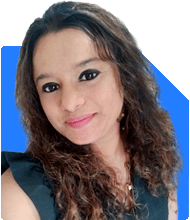Ramalingam Kalirajan |10908 Answers |Ask -Follow
Mutual Funds, Financial Planning Expert - Answered on May 21, 2024
He has an MBA in finance from the University of Madras and is a certified financial planner.
He is the director and chief financial planner at Holistic Investment, a Chennai-based firm that offers financial planning and wealth management advice.... more

I am aged 30 and earning 5.6lpa. having 5 flats( father's) and residing in Kolkata. I am married. Have placed 8k in different SIPs and maintaining 1.5L in ppf since 3 years. How can I grow my money 4x...? My monthly expenditure is around 15k and I am able to save 10k every month apart from the investment. Should I buy gold etf?
Achieving a fourfold increase in wealth requires a strategic approach that leverages your current financial situation, investment capabilities, and long-term goals. Let's explore personalized strategies to maximize your wealth while addressing your specific circumstances and aspirations.
Understanding Your Financial Landscape
You're in a favorable position with a stable income, significant assets in the form of inherited flats, ongoing SIP investments, and a disciplined approach to savings. Before formulating a growth strategy, let's assess your current financial standing and identify areas for optimization.
Leveraging Existing Assets
Real Estate Holdings: While real estate can be a valuable asset, it's essential to evaluate the potential for rental income, capital appreciation, and liquidity constraints. Consider diversifying your portfolio beyond real estate to unlock additional growth opportunities.
Systematic Investment Plans (SIPs): Your SIP investments are a prudent way to accumulate wealth over time through disciplined contributions to equity and debt funds. Continuously monitor fund performance and consider adjusting allocations based on market conditions and your risk tolerance.
Public Provident Fund (PPF): PPF provides a secure avenue for long-term savings with attractive tax benefits. Given your existing commitment to PPF, assess whether it aligns with your investment objectives or if alternative options offer higher growth potential.
Exploring Growth Opportunities
Equity Investments: Given your long investment horizon and risk appetite, equity investments can play a pivotal role in wealth multiplication. Consider allocating a portion of your savings to well-researched equity funds managed by experienced fund managers.
Diversified Mutual Funds: Diversified mutual funds offer exposure to a range of asset classes, including large-cap, mid-cap, and small-cap stocks, as well as debt instruments. Opt for direct plans or seek guidance from a Certified Financial Planner to access professional advice and optimize returns.
Gold ETFs: While gold can act as a hedge against economic uncertainty, its growth potential may be limited compared to equity investments. Evaluate your risk-return profile and consider allocating a small portion of your portfolio to gold ETFs for diversification.
Mitigating Risks and Maximizing Returns
Risk Management: Maintain a balanced approach to risk by diversifying across asset classes and regularly reviewing your investment portfolio. Avoid speculative investments and focus on long-term wealth creation strategies aligned with your financial goals.
Regular Monitoring: Stay informed about market trends, economic developments, and regulatory changes that may impact your investments. Periodically review your portfolio's performance and make adjustments as necessary to optimize returns and mitigate risks.
Conclusion
In conclusion, achieving a fourfold increase in wealth necessitates a comprehensive financial plan that leverages your existing assets, investment capabilities, and growth opportunities. By diversifying across asset classes, optimizing investment strategies, and staying disciplined in your approach, you can work towards realizing your financial goals and securing a prosperous future.
Best Regards,
K. Ramalingam, MBA, CFP,
Chief Financial Planner,
www.holisticinvestment.in
You may like to see similar questions and answers below
Ramalingam Kalirajan |10908 Answers |Ask -Follow
Mutual Funds, Financial Planning Expert - Answered on Jul 29, 2024
Jinal Mehta | Answer |Ask -Follow
Financial Planner - Answered on Jul 26, 2024
Ramalingam Kalirajan |10908 Answers |Ask -Follow
Mutual Funds, Financial Planning Expert - Answered on Jan 30, 2025
Ramalingam Kalirajan |10908 Answers |Ask -Follow
Mutual Funds, Financial Planning Expert - Answered on Jun 26, 2025
Reetika Sharma |432 Answers |Ask -Follow
Financial Planner, MF and Insurance Expert - Answered on Sep 18, 2025
Ramalingam Kalirajan |10908 Answers |Ask -Follow
Mutual Funds, Financial Planning Expert - Answered on Dec 20, 2025
Ramalingam Kalirajan |10908 Answers |Ask -Follow
Mutual Funds, Financial Planning Expert - Answered on Dec 20, 2025
Naveenn Kummar |237 Answers |Ask -Follow
Financial Planner, MF, Insurance Expert - Answered on Dec 20, 2025
Ramalingam Kalirajan |10908 Answers |Ask -Follow
Mutual Funds, Financial Planning Expert - Answered on Dec 19, 2025
Nayagam P P |10859 Answers |Ask -Follow
Career Counsellor - Answered on Dec 19, 2025
Ramalingam Kalirajan |10908 Answers |Ask -Follow
Mutual Funds, Financial Planning Expert - Answered on Dec 19, 2025
Ramalingam Kalirajan |10908 Answers |Ask -Follow
Mutual Funds, Financial Planning Expert - Answered on Dec 19, 2025
Ramalingam Kalirajan |10908 Answers |Ask -Follow
Mutual Funds, Financial Planning Expert - Answered on Dec 19, 2025
Radheshyam Zanwar |6751 Answers |Ask -Follow
MHT-CET, IIT-JEE, NEET-UG Expert - Answered on Dec 19, 2025
Radheshyam Zanwar |6751 Answers |Ask -Follow
MHT-CET, IIT-JEE, NEET-UG Expert - Answered on Dec 19, 2025


























